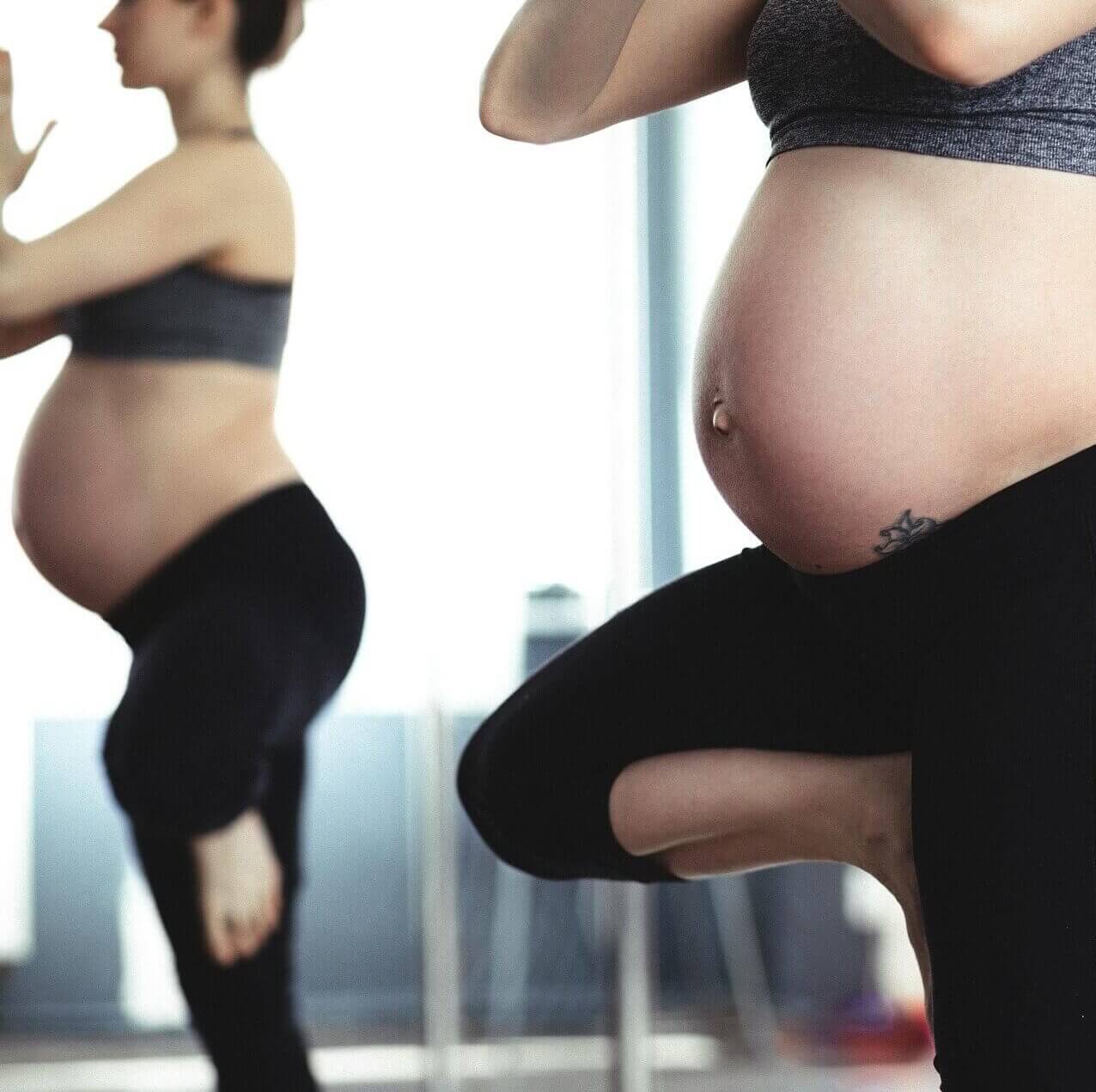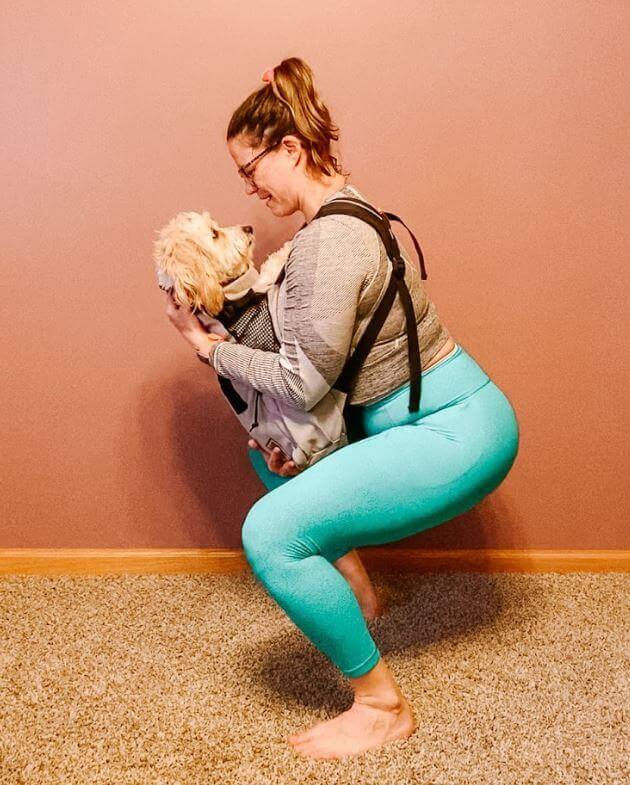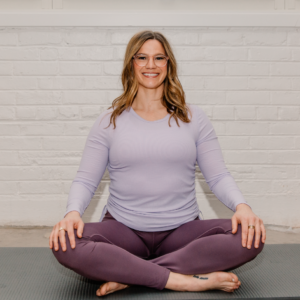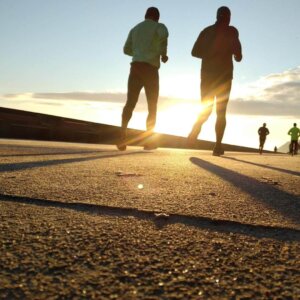

Pregnancy is ALL change!
Your hormones are fluctuating, your body is changing to accommodate them, and everyone seems to have an opinion on what you should, or should not, do. It’s a lot to take on! So, should you exercise during pregnancy?
Facts Vs. Reality
Fact: 92% of doctors recommend exercise during pregnancy.
Reality: Only 40% actually exercise during pregnancy; most performed moderate activity an average of 12 minutes per day, and most spend more than half their day in sedentary behaviors.
Fact: Evidence supports that exercise during pregnancy shows shorter delivery times, fewer complications with delivery, a faster return to activities prior to pregnancy, improved milk supply, and improved maternal and child health.
Reality: There is a common uncertainty of which exercises are safe, and how to physically go about exercise during pregnancy, due to a sincere lack of information. There are not a ton of role models for this, and society has a way of painting pregnancy only as you sit in a chair contemplating the impending birth of your child with a never-ending glow and smile forever.
Even though you have a bun in the oven, you still need to move your body!
Ask yourself these questions to determine what exercise during pregnancy could look like for you.
- What activities do you enjoy, or already participate in?
- Does the activity pose a risk to the fetus or person bearing the child?
- Will the activity be safe during changes in balance and center of gravity?
- Does common sense tell you that this is a safe activity to continue during pregnancy?
- Can the activity be easily modified as the pregnancy progresses?
Still need answers about exercise during pregnancy?
How does pregnancy affect exercise?
Every person and pregnancy is unique, generally speaking during pregnancy you have obvious hormonal changes going on causing an increase in the looseness of your joints and ligaments. Also, due to a growing baby, there are changes occurring in your body posture and mechanics, altering your center of gravity. This affects your balance and coordination. Finally, increases in fluid retention and a developing child cause changes to your pelvic floor, and pelvic girdle, function. These changes are what cause back, pubic, thigh, and knee pain, as well as altered awareness of your own body in space.
Is exercise during pregnancy safe for the baby?
Exercise during an uncomplicated pregnancy is safe and protective to the developing fetus. Studies also show that a postnatal infant of a person who partook in exercise during pregnancy demonstrates better health outcomes. Over time the positive effects shown for a fetus and postnatal baby were: enhanced cardiac autonomic function, reduction in incidences of macrosomia and large gestational age, and improved Apgar scores. For one year of age, they displayed better mental performance per the Bayley Test of infant Development. And finally, at 5 years of age, had overall less body fat, and scored higher on general intelligence tests and oral language skills.
What kinds of exercises are safe during pregnancy?
Collectively research has found that these exercises are safe to complete during pregnancy: walking, stationary cycling, aerobic exercises, dancing, resistance exercises (i.e. using weights, elastic bands), stretching exercises, and water aerobics. Ideally, you are targeting 20-30 minutes, most days of the week, at a moderate intensity.
What exercises should I avoid while pregnant?
Exercises which have you lying flat on your back can be dangerous during pregnancy. This position causes the baby to compress an important avenue of blood flow, known as your inferior vena cava. This condition is known as Supine Hypotensive Syndrome, or aortocaval occlusion, and affects about 10% of pregnant women. If you feel dizzy, short of breath, unexplained restlessness, nausea, numbness in your limbs, or visual disturbance while in a supine position, immediately roll to your side. In the future modify exercises so that you are not lying completely flat, instead in a semi-reclined position.
Are there guidelines for exercise during pregnancy?
The American College of Obstetrics and Gynecology is the governing body on pre and post pregnancy guidelines. They recently updated their ACOG recommendations for exercise during pregnancy in 2020. They are as follows:
- Physical activity and exercise in pregnancy are associated with minimal risks and have been shown to benefit most women, although some modification to exercise routines may be necessary because of normal anatomic and physiologic changes and fetal requirements.
- A thorough clinical evaluation should be conducted before recommending an exercise program to ensure that a patient does not have a medical reason to avoid exercise.
- Women with uncomplicated pregnancies should be encouraged to engage in aerobic and strength-conditioning exercises before, during, and after pregnancy.
- Obstetrician–gynecologists and other obstetric care providers should evaluate women with medical or obstetric complications carefully before making recommendations on physical activity participation during pregnancy. Activity restriction should not be prescribed routinely as a treatment to reduce preterm birth.
- Additional research is needed to study the effects of exercise on pregnancy-specific conditions and outcomes and to clarify further effective behavioral counseling methods and the optimal type, frequency, and intensity of exercise. Similar research is needed to create an improved evidence base concerning the effects of occupational physical activity on maternal–fetal health.
What is a good home workout routine for pregnancy?
Something that has some strengthening, as well as cardio mixed in. Typically I recommend my patients do 30 minutes of walking, at a moderate level, most days of the week (5-6). I also initiate a strengthening program which includes squats, lunges, biceps, triceps, chest, and back 3 days per week.
Can I squish the baby by bending over?
One less reason to worry right here! Many, many people wonder if they can squish their baby doing any number of things. THE BREAKDOWN: The baby is housed in your uterus and fully floating in a fluid-filled sac of amniotic fluid. A baby’s environment allows for you to move normally, and it is in no way harmful to them. While bending over does compress the baby, it is nothing that will ultimately be harmful to them.
When should a pregnant woman stop exercising?
If you notice any of these symptoms: vaginal bleeding, abdominal pain, regular painful contractions, amniotic fluid leakage, difficult breathing prior to exertion, dizziness, headache, chest pain, muscle weakness affecting balance, calf pain, or swelling STOP your workout IMMEDIATELY and contact your healthcare provider.
Can exercising cause a miscarriage?
Most doctors and researchers say that doing exercise during pregnancy, if you are low risk, does not cause a miscarriage. In fact, it will actually decrease your risk of miscarrying. If you think you may have a higher risk pregnancy, ask your healthcare provider to get some guidance on what is safest for your unique pregnancy.
Can you exercise in early pregnancy?
Most certainly YES! Exercising regularly helps keep you and baby healthier by helping with your strength, stamina, blood flow, blood sugar levels and many, many other things. Try for 30 minutes of moderate activity every day.
What pregnancy exercise will help relieve lower back pain?
Strengthening and stretching exercises will help with low back pain. Abdominal bracing is a strengthening exercise, work on pulling your belly button to your spine. Additionally, tackle butt strength by doing squats, bridges, or lunges. This promotes stability and strength, and will reduce low back pain. For a super helpful stretching exercise try some yoga postures such as cat and cow, modified child’s pose, crescent pose (hip flexor stretch), or even a forward fold (hamstring stretch). Check out all the modifications I have to offer for these poses and stretches below!
Are there pregnancy exercises that will help ease labor?
While delivering, various supported exercises can be helpful. Using the wall as a support can be helpful with a forward fold or wall squat. Utilizing an exercise ball to complete pelvic tilting, gentle bouncing, or other modified yoga poses. Use your birthing partner, or a nurse, as support to sway. Sway to and fro, as if you are slow dancing with your partner. This can help to ease your pain, and allow for a more comfortable labor progression.
Are there pregnancy exercises to induce labor?
Interestingly enough, the exercises that help to induce labor are the same as those you do throughout your pregnancy. Things like walking, squatting (supported or unsupported), lunging, pelvic tilting, and stretching your inner thighs, all help to promote safe labor and quicker delivery.
When should I start post-pregnancy exercise?
As soon as you deliver you should start working on engaging your tummy and pelvic floor muscles. A simple cue to do this is gentle: try to draw in your belly button, and stop the flow of urine, in that order. Depending upon your delivery, the typical range is 6-8 weeks to resume your typical pre-pregnancy exercise routine, or start a new one. However, during those 6-8 weeks you should still be walking and moving about.
What are the best pregnancy exercise apps?
Oh Baby! and Baby 2 Body both offer great pregnancy exercise tips and information. Oh Baby! is a great app that shows both you and your baby’s milestones, and tailors your workout to exactly where you are in your pregnancy, keeping in mind your due date. It also provides some amazing extras: a kick counter, contraction timer, and various blogs from health experts. Baby 2 Body is definitely a favorite app because it has specific workouts for pre-and post-pregnancy. As well as great extras like recipes, a water tracker, and it connects you with podcasts to help you during, and following your pregnancy.

If you need help getting moving during this transition, reach out to licensed professionals to help you! The common saying, “it takes a village to raise a child”, should be something that we apply to parents and children alike. Finding fitness instructors and therapists such as myself can help you find, start, modify, or continue an exercise program that is safe for you and your baby both!
Check out the above-mentioned yoga poses, or stretches in the following guides! Each is full of modifications so that you can always meet your changing body and your baby where they are at for the day! Let’s ease your journey momma.
If you feel that would benefit from pelvic floor physical therapy or think you are experiencing symptoms that may require diagnosis, you can book a FREE 20-minute consultation HERE.
Or, if you’d like to learn more about all things pelvic floor health, head over to Instagram! You can always reach out in the DM’s if you have any questions!
More content you may like:








Sorry, the comment form is closed at this time.